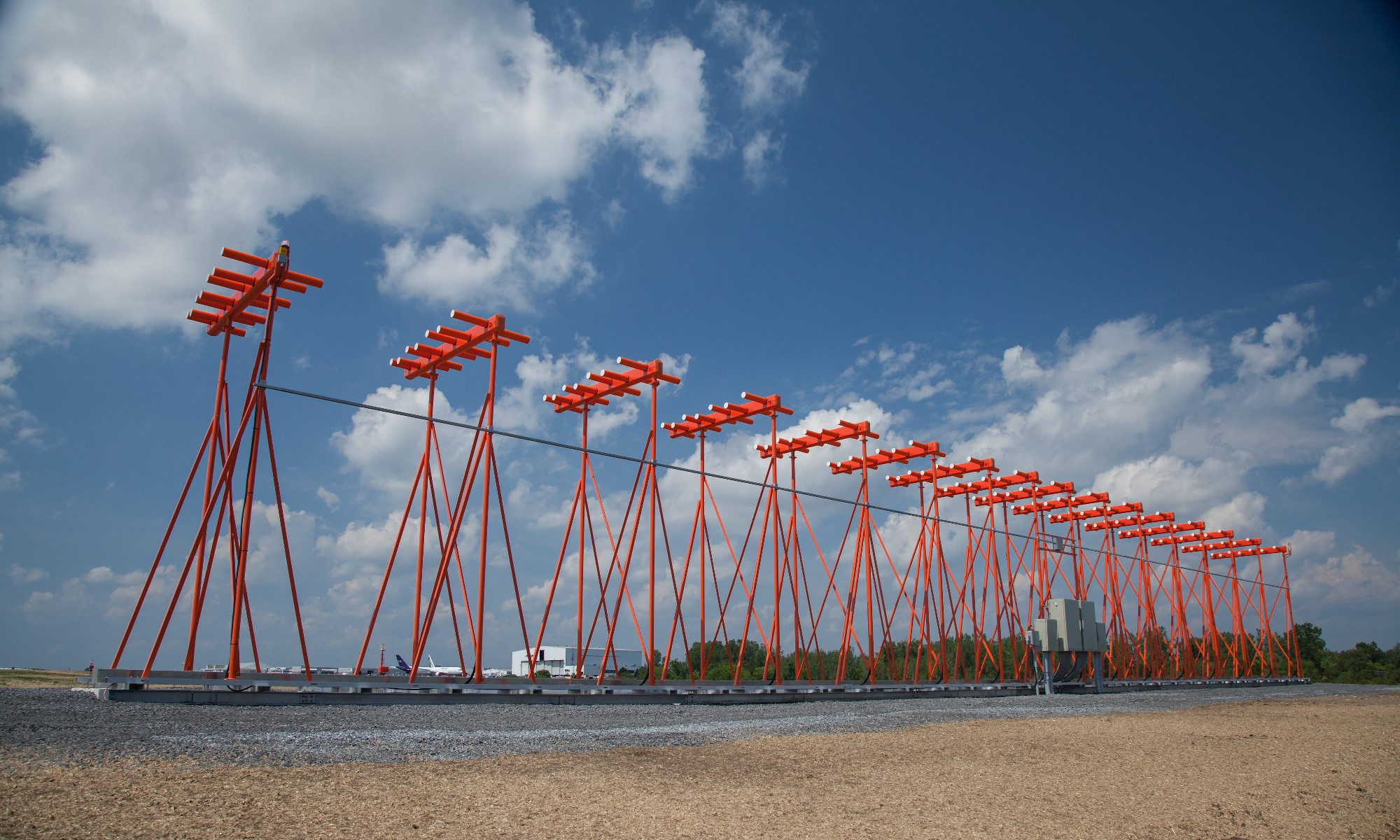For the purpose of discontinuous addition of navigation data with the value of a momentary distance from the aircraft to the runway’s threshold, the following marker beacons are used:
Outer Marker (OM)
- The outer marker is located 3,5÷6 NM (5.556÷11.112 km) from the runway’s threshold. Its beam intersects the glide slope’s ray at an altitude of approximately 1400 ft (426.72 m) above the runway. It also roughly marks the point at which an aircraft enters the glide slope under normal circumstances, and represents the beginning of the final part of the landing approach.
- The signal is modulated at a frequency of 400 Hz, made up by a Morse code – a group of two dots per second. On the aircraft, the signal is received by a 75 MHz marker receiver. The pilot hears a tone from the loudspeaker or headphones and a blue indicative bulb lights up. Anywhere an outer marker cannot be placed due to the terrain, a DME unit can be used as a part of the ILS to secure the right fixation on the localizer.
- In some ILS installations the outer marker is substituted by a Non Directional Beacon (NDB).
![]() Figure 15 – The outer position marker (blue).
Figure 15 – The outer position marker (blue).
(figure source: http://en.wikipedia.org/wiki/File:Outer_Marker_Indicator.gif)
Middle Marker (MM)
- The middle marker is used to mark the point of transition from an approach by instruments to a visual one. It’s located about 0,5÷0,8 NM (926÷1482 m) from the runway’s threshold. When flying over it, the aircraft is at an altitude of 200÷250 ft (60,96÷76,2) above it. The audio signal is made up of two dashes or six dots per second. The frequency of the identification tone is 1300 Hz. Passing over the middle marker is visually indicated by a bulb of an amber (yellow) colour . It was removed in some countries, e.g. in Canada.
![]() Figure 16 – The middle marker (yellow).
Figure 16 – The middle marker (yellow).
(figure source: http://en.wikipedia.org/wiki/File:Middle_Marker_Indicator.gif)
Inner Marker (IM)
- The inner marker emits an AM wave with a modulated frequency of 3000 Hz. The identification signal has a pattern of series of dots, in frequency of six dots per second. The beacon is located 60m in front of the runway’s threshold. The inner marker has to be used for systems of the II. and III. category.
![]() Figure 17 – The inner marker (white).
Figure 17 – The inner marker (white).
(figure source: http://en.wikipedia.org/wiki/File:Inner_Marker_Indicator.gif)
